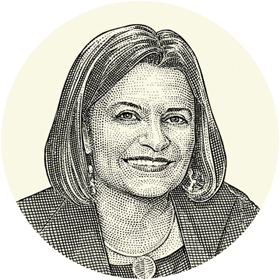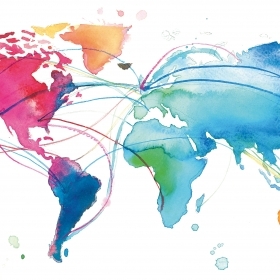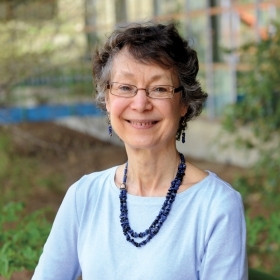
A couple of summers ago, while I was carrying my Wellesley tote bag in Paris, a young woman came up to me and asked what my connection to Wellesley was. During our brief conversation, I learned that she was coming to the College in the fall. Her excitement about Wellesley—and about her chance meeting with the president—was palpable.
Over the past nine years, I have come to expect such Wellesley “sightings” everywhere I go. That’s because Wellesley is everywhere. With alumnae in 104 countries, Wellesley women make a difference in every corner of the globe—including Antarctica, where an alumna from the class of 2005 worked at the U.S. Antarctic Program’s McMurdo Station last year.
Our international orientation is what helps to keep Wellesley at the forefront of the liberal arts. As more people work cross-nationally, as technology transcends national borders, and as travel becomes easier, global linkages between academic institutions will be increasingly important. They will also be second nature to us. As former United States Secretary of Education Arne Duncan has said, “In the 21st century, a quality education is an international education.”
Wellesley has a deep history of being globally focused—our first international student came to Wellesley from Japan in 1888—and we have long been a forerunner in building partnerships around the world. In 1906, we established one of the earliest programs in this country that enabled Chinese students to study at Wellesley, and we proudly note that Mayling Soong Chiang 1917 (later known as Madame Chiang Kai-shek) and Bing Xin M.A. ’26, one of China’s most celebrated writers of the 20th century, are Wellesley graduates. Today, about 12 percent of our students are international, and we benefit from strong partnerships with the Davis-United World College Scholars Program and the MasterCard Foundation, both of which help bring students from around the world to Wellesley.






We ask that those who engage in Wellesley magazine's online community act with honesty, integrity, and respect. (Remember the honor code, alums?) We reserve the right to remove comments by impersonators or comments that are not civil and relevant to the subject at hand. By posting here, you are permitting Wellesley magazine to edit and republish your comment in all media. Please remember that all posts are public.